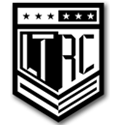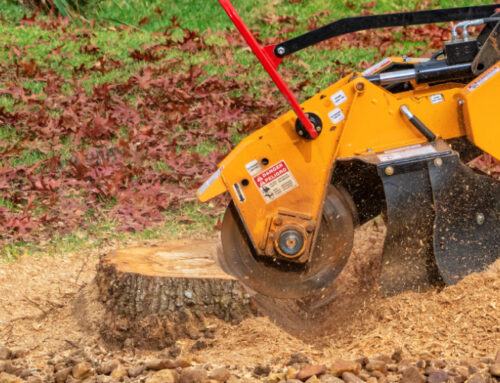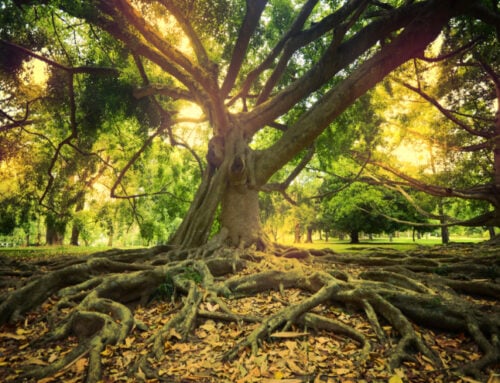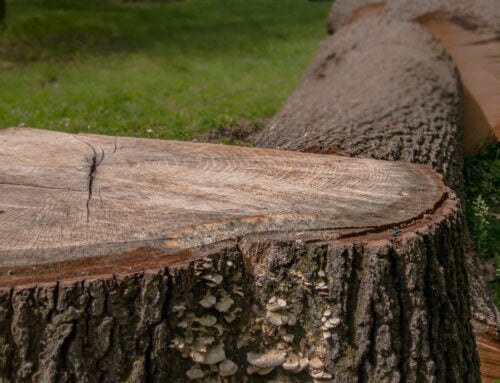Stump grinding is a common way to remove tree stumps from the ground. It’s a process that turns the stump into wood chips and sawdust, completely getting rid of it and its roots below the ground. This helps make the lawn look better, removes any safety hazards, and creates space for other landscaping uses.
Understanding Stump Grinding
Before talking about replanting trees, it’s important to know how stump removal works. Stump grinding involves the use of specialized machinery to reduce a tree stump to wood chips and sawdust. This not only removes the stump but also improves the overall appearance of the area. Tree stumps can look unsightly, but grinding them down blends them with the rest of the landscape.
The Impact on Tree Replanting
Planting a tree again after you remove a stump can be tricky. The removal process may harm the surrounding soil and disturb the tree’s root system. How much damage is done depends on factors like the size and condition of the stump, the equipment used, and the person operating it. The debris left behind and changes in the soil can affect how well a replanted tree grows.
Assessing the Stump and Surrounding Area
Before replanting a tree, it’s crucial to carefully inspect the condition of the stump and the area around it. Check for any remaining roots, signs of disease, or structural damage. Also, evaluate the replanting spot for things like available space, sunlight exposure, soil quality, and drainage. These factors are essential for the tree to grow successfully.
Techniques for Replanting a Tree
To replant a tree after you remove a stump, there are a few important steps to follow. Start by selecting a tree species that suits the local climate, soil, and available space. Properly prepare the replanting site by removing any leftover debris, improving the soil if needed, and creating a good planting hole. The tree should be planted at the right depth and supported well for stability.
Caring for Replanted Trees
Taking care of replanted trees is crucial for their survival and growth. They need enough water during the initial phase, and adding a layer of mulch can help retain moisture and control soil temperature while preventing weed growth. Fertilizing the tree should be done carefully, following guidelines to avoid over-fertilization, which can harm the tree. Regularly check for pests, diseases, and other problems to keep the tree healthy.
Factors Affecting Successful Tree Replanting
Several factors can impact the success of replanting a tree after you remove a stump. The type of tree and its age matter, as different species have different needs and adaptability.
Environmental factors like climate, sunlight, and available space are also important. Other complications like compacted soil, root damage, or underground utilities can affect the replanting process and may need specific measures to address.
Challenges in Replanting Trees after Stump Grinding
Replanting trees after stump grinding presents several challenges that need to be addressed. One significant issue is the potential damage to the surrounding soil and the tree’s root system during the stump removal process.
The grinding machinery can disturb the soil’s structure, compacting it and affecting its ability to provide proper nutrients and water to the replanted tree. Additionally, the old tree’s root system might be compromised, making it difficult for the new tree to establish itself firmly.
Steps to Ensure Successful Tree Replanting
To ensure successful tree replanting after stump grinding, certain steps should be followed. Firstly, address stump removal issues by amending the soil with organic matter to improve its structure and nutrient content, along with creating proper water drainage channels.
Selecting the right tree species for the local climate and soil conditions is crucial, and consulting with experts can be helpful. After planting the new tree, provide consistent care through regular watering, mulching to retain soil moisture, and periodic inspections for pests and diseases.
Careful planning, understanding the impact of stump removal, evaluating the site, and attentive care are all essential for the tree’s long-term survival and growth. Seeking professional advice can greatly assist in making informed decisions and achieving the desired results.
Alternative Options to Replanting
Sometimes, replanting a tree might not be the best choice. Instead, other options can be considered, like landscaping with different plants, adding decorative features, or creating functional spaces. Each alternative has its pros and cons, and the decision will depend on individual preferences and site considerations, so keep this in mind after you remove a stump.
Consult With Professionals to Remove a Stump
If you’re thinking of replanting a tree after you remove a stump, consider seeking advice from the professionals at LTRC Tree Specialist in Alpharetta, GA. Our expertise can guide you through the process and make it easier. Whether you need help assessing the stump’s condition, evaluating the replanting site, or choosing the right tree species, our team is there to assist you. You can contact us through our website or by calling (404) 288-5872 for more information.

Contact Us For A Free Estimate!







